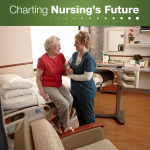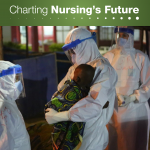
Dec 23, 2020
Our Most-Read Posts of 2020
As the Year of the Nurse and Midwife ends, we take time to look back on the Campaign’s most read stories of a tumultuous and dangerous year that nursing, and the rest of the world, will not soon forget.
Most of the articles you’ll see below focus on the nursing workforce and COVID-19.
10) Newly Released Survey Data Show Nurses More Diverse, Better Educated
Published in mid-January, the data from the 2018 National Sample Survey of Registered Nurses, the longest running survey of registered nurses in the U.S., showed that the nursing workforce is more diverse and better educated than a decade ago, and there is still much room for improvement.
9) Nurses: How to Advocate for Federal Policy Change
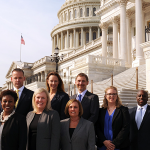 After observing how nurses, physicians, insurers, consumers, and other health care advocates delivered their messages, Ellen Kurtzman, PhD, RN, FAAN, offered advice for nurses and professional nursing organizations looking to “up” their policy game, especially during the pandemic.
After observing how nurses, physicians, insurers, consumers, and other health care advocates delivered their messages, Ellen Kurtzman, PhD, RN, FAAN, offered advice for nurses and professional nursing organizations looking to “up” their policy game, especially during the pandemic.
8) Rehired: Emeritus Nurses Bring Knowledge and Experience to Younger Workforce
Workforce shortages, high turnover rates, and the retirement of nurses threaten the ability of health systems to care for the sick and achieve their long-term goal of improving population health. In the face of these challenges, one hospital in Indiana came up with a novel idea: the emeritus nurse, a retirement-aged nurse who takes on limited nursing responsibilities.
7) Novel Programs Support Nurse Well-Being During Pandemic
Before the pandemic, studies found that registered nurses suffer from depression at twice the rate of other professionals. This article shares how three different organizations are helping nurses during the COVID-19 pandemic.
6) Pandemic Strains the Nursing Workforce
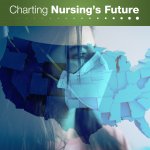 Early on in the pandemic we gathered some stories that showed what government and nurse leaders were doing to ensure the nursing workforce was adequate and protected.
Early on in the pandemic we gathered some stories that showed what government and nurse leaders were doing to ensure the nursing workforce was adequate and protected.
5) As Nurses Prep for Coronavirus, Lessons from the Ebola Outbreak
In 2016, Charting Nursing’s Future released a policy brief on disaster preparedness and response. Among other topics, the brief looked at how nurses responded to the Ebola virus outbreak and the impact of that outbreak on how nurses did their work. We shared excerpts from that article to help nurses prepare for COVID-19.
4) At Height of COVID-19, Nurses Reported High Levels of Distress
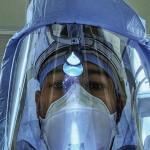 The largest study in the United States to document the psychological impact among health care professionals working on the front lines at the height of the COVID-19 pandemic in New York City found that levels of stress, anxiety, and depression were highest among two groups: nurses and advance practice providers.
The largest study in the United States to document the psychological impact among health care professionals working on the front lines at the height of the COVID-19 pandemic in New York City found that levels of stress, anxiety, and depression were highest among two groups: nurses and advance practice providers.
3) Nurse Educators Consider the Path Forward During COVID-19
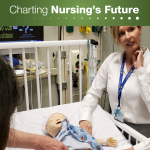 When COVID-19 led hospitals and other clinical sites to close their doors to nursing and medical students earlier this year, concerns focused on the coming surge of patients. Many states issued temporary nursing licenses so new graduates could serve on the front lines before sitting for their licensure exams.
When COVID-19 led hospitals and other clinical sites to close their doors to nursing and medical students earlier this year, concerns focused on the coming surge of patients. Many states issued temporary nursing licenses so new graduates could serve on the front lines before sitting for their licensure exams.
2) Nurses on the Frontlines of the COVID-19 Response
 Early on in the pandemic we gathered stories to showcase nurses’ responses to the pandemic, as well as their needs.
Early on in the pandemic we gathered stories to showcase nurses’ responses to the pandemic, as well as their needs.
1) The Time for Outrage Is Now
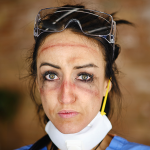 Campaign director Susan B. Hassmiller, PhD, RN, FAAN penned this piece for Nurses Week in May. She wrote angrily about the United States’ failure to provide nurses with sufficient personal protective equipment to protect themselves, their families and their patients; she fumed at the toll that the virus was exacting on marginalized communities that already face far too much hardship.
Campaign director Susan B. Hassmiller, PhD, RN, FAAN penned this piece for Nurses Week in May. She wrote angrily about the United States’ failure to provide nurses with sufficient personal protective equipment to protect themselves, their families and their patients; she fumed at the toll that the virus was exacting on marginalized communities that already face far too much hardship.


